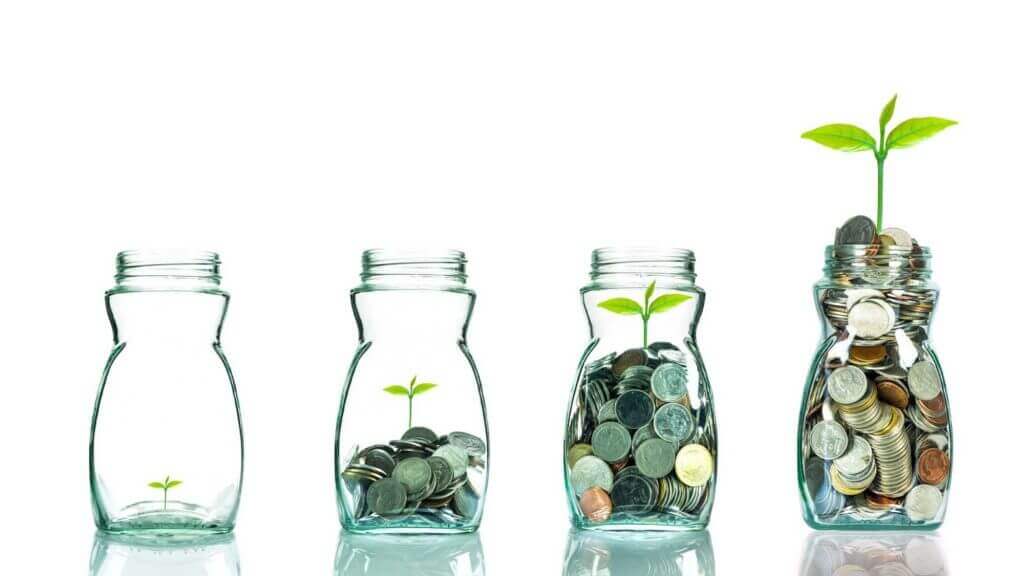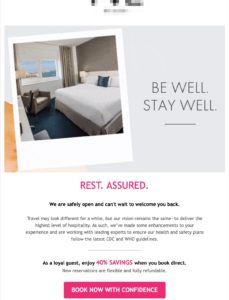
This is my second pandemic-themed article, following the last magnum opus on Hotel Marketing and Revenue Management in the Time of Pandemic. I was definitely hoping for things to be better by now. I still have a lot of optimism.
NB: This is an article from Words of Vikram
However, for now, the hospitality and travel industry must continue to undergo a massive overhaul in how we think about and operate almost every single department. Owners, employees, brands and investors will continue to take a direct hit from an event that we thought was only possible in disaster movies. But there are things we can do to mitigate our losses.
Pricing needs your attention today, almost as much as everything else you are doing to get your hotel asset ready to reopen and operate safely. Although I’ve never seen a situation exactly like this one, I know how to observe market trends and adjust accordingly. I have very clear ideas on how to weather this disruption and be positioned for success in the future.
Inspired by Biggie’s commandments, I have written you a pandemic pricing manual of sorts. You know, ‘a step by step booklet, to get your hotel revenue game on track, not your profits pushed back’. Ok, I will stop trying to rhyme! Let’s dive into some of my pandemic pricing principals.
Avoid the Speculation Olympics
Opinions can be made to look like facts when you add professional looking graphs and charts, plus a healthy dose of PR. I am not talking about information on the virus… I am talking about the new sport many industry experts love to participate in: Travel Recovery Speculation.
The 2020 Tokyo Summer Olympics might have been postponed, but the 2020 Hotel Recovery Speculation Olympics are going strong. I have received and declined my fair share of invites to get on a virtual meeting to speculate about recovery timelines. How can we speculate when everything is so fluid?
Historical data from past disasters does not help much, as we have never experienced anything like this situation before. Companies selling data and software are obviously panicking. Why would a hotel pay for irrelevant historical and/or forecasting data? This pandemic is nothing like 9-11 or the 2008 global financial crisis. You can amuse yourself by overlaying recovery graphs and timelines from past disasters and then trying to make a prediction. Just don’t base your strategy on that. Forcing unrelated data to fit your narrative is about as effective as tasseography.
Can’t fight the urge to speculate? How about we speculate on these issues instead:
- The pandemic has brutally exposed payroll inefficiencies in revenue management and marketing departments across both independent and brand hotels. How many CROs, SVPs, VPs, Directors and Managers does it really take to pick the right rates for your hotel/portfolio?
- Is your marketing team actually producing any marketing or are they just juggling vendors? What services are you still paying for, and why?
- Can your revenue team call rates without usable historical data, purely based on market conditions?
- Does your revenue team need to be on property anymore?
Get to a white board and start coming up with ideas on how to run your hotel leaner than ever before. Let your imagination run wild! This is a much better use of your time.
Dynamic Pricing or Bust
Seasonal and historical rate charts are now DOA. The same applies to any rates you might have historically quoted for groups and meetings. That piece of business is not coming back for a little while.
Dad jokes aside, the sudden demise of travel demand on a global scale is an opportunity for you to switch to dynamic pricing if you were not already doing so. Here are some things to consider when setting rates in the current market:
- Survival Needs: How much revenue does your asset need to survive? The keyword here is survive. Don’t forget to account for any changes in fixed costs, debt, payroll, insurance, interest payments, etc. It’s hard to believe, but there are still owners who do not know the actual cost of an unsold room at their hotel. Setting survival goals is step one in pricing yourself out of this disaster.
- Competitor Pricing: With the global hotel market in flux, you need a new approach to researching the competition. You can still look at their rates, but you don’t know what your competitors’ survival needs are. If you are seeing strange pricing around you, you don’t have to follow their lead. Love your hotel product, but check yourself before pricing yourself out of the market.
- Supply and Demand: Most major travel destinations are flooded with supply and have little demand. The development pipeline for new hotels in the US was pretty robust when the year started. Are any new hotels opening in your market soon? If so, they are going to be competing for your market share using a fresher product. Are any hotels temporarily shutting down? You can price adjust to capture demand that is not being met by others.
- External Factors: These are X factors that can quickly change everything for your asset and location. Examples include state regulations, border closures, airline capacity restrictions, vaccine updates, job market changes, unemployment numbers, etc. In short, they are things outside your control that directly impact your demand and your rates. Pricing dynamically forces you to monitor these factors when setting rates, giving you an edge over your competition. There is no magical AI-powered revenue management software that can calculate X-factor values and help you price. Get ready to put in the hours and grab that extra cup of coffee (or tea), as you are going to need it.
Dynamic pricing is a very old school approach. It is not a new concept or just a marketing tagline that can be used to sell software or services. Until the price tag was invented in the 1870s, pricing for almost everything was completely dynamic. If you don’t know… now you know.
Revenues vs Feelings
Here is a very important lesson I learned while working for the top hotel private equity fund in the world:
You cannot deposit your feelings into a bank account. Banks only accept cash.
The Bank of Feelings is an imaginary entity that exists in our head. Focusing on actual revenue numbers instead of feelings has had a tremendous positive effect on my career. Numbers and reality are your friends when it comes to pricing decisions. Don’t let your ego and self-worth get entangled with your pricing strategy.
Here are two pricing ideologies that the pandemic is rendering obsolete:
1. A lower rate is going to attract a certain type of ‘unsavory’ guest to my establishment.
Reality check: The pandemic has cost the US 20.6 million jobs since mid-March, resulting in an unemployment rate of 14.7%. These are numbers we have not seen since the Great Depression (source: Pew, US.DOL). There is a very good chance that the same people who paid a high rate at your hotel in January 2020 are now under- or unemployed. Are the same people now unsavory because they have fallen off a cliff and are working their way back up? Why would you not reach out to get them back at a lower rate for now? It’s the same people, just with a smaller wallet.
Everyone is looking for a deal right now and being cautious with their money. This is even more relevant for independent/boutique hotels that spent millions ‘building a brand and a following.’ Give people a chance to experience your product for the first time or as a returning guest, and accept some money to help you pay your bills. That’s how global recovery starts…one dollar at a time.
2. If I lower my rates now, it will take years to build up my ADR/rate again.
Reality check: Thanks to the pandemic, this is simply not true anymore. This year, the world economy fell apart. In addition, people are still severely restricted as to where they can travel. Your dynamic pricing adjustments should reflect that reality. When the pent-up demand returns, simply pull up your rates up in tandem. Remember, airlines have never hesitated to heavily fluctuate rates based on market demand. Why can’t hotels do it too? Stop using rate recovery charts from past disasters and chart your own path for recovery.
A notable exception to everything I mentioned above is the type of property I like to call a “trophy asset.” These owners don’t care about reality or numbers. They demand a high ADR number so they can brag about it over a round of golf.
Make a Call
As a hotel owner/investor/manager, this is the time to ask yourself a very simple question: Is your goal to help your asset recover from this pandemic and make money? If you answered yes, then the key is not to overanalyze to the point of decision paralysis. Please make a call and play the market. It is better to make a mistake than stay paralyzed in fear of the rates not working.
Wandering in the middle of the road (picking a rate “in the middle” of what you’re seeing in your market), assuming that demand will just land in your lap, is a bad idea for pricing and life in general. Mr. Miyagi taught us this very important lesson in the Karate Kid all the way back in 1984.
When historical metrics are no longer applicable, you have to pick a direction based on your product, location and basic survival needs. If you make an incorrect call, don’t panic! It takes just a few clicks to make adjustments and you get right back on your pricing horse. Making a call right or left is better than blindly following the market in the middle. Don’t get squished!
Pricing Enlightenment
What is more annoying than seeing “unprecedented times” and “the new normal” in our daily emails and conversations? For me, it is people pretending to be instant experts in pandemic pricing. Working with hotels during a previous disaster (9-11, Global Financial Crisis, etc.) does not automatically qualify you to solve this one.
This is my first (and hopefully last) Global Pandemic. Even after decades in the revenue/marketing game, I have had to rework and relearn a lot! You simply cannot skip the hard work and jump straight into a clairvoyant state, which I like to call “Pricing Enlightenment.”
Pricing Enlightenment:
When you pick rates based on your feelings, without considering current market conditions.
I’ve talked with many hotel owners who are convinced that their asset can fetch a higher rate than current reality suggests. On the flip side are the low ballers who refuse to yield their rates upward, even when the business picks up. Being dynamic with rates is the right path forward, but it does involve work and commitment.
Don’t Promo the Pandemic
Please resist the temptation to reduce your entire pandemic recovery strategy to a discount code! Promo-ing the pandemic is one of the worst long-term strategic mistakes you can make. Flash sales and massive discounting reads “we have officially run out of ideas” for an asset/brand. This strategy revolves around the magical thinking that a massive rate promo will create new demand in your market.
Demand generation is about aligning your marketing and sales efforts. Instead of a a fire sale promo code, offer a really good reopening-fall-winter rate for your asset. Focus on the value of your product instead of giving 50% off to anyone clicking on an email. Instead of discount/promo codes, offer fair rates. No games. Just full transparency about the fact that you really appreciate their business.
Almost every week since the pandemic started, I have received a “40% to 50% off best available rate” email from a hotel or brand. Not to bring up my friends at Melia Hotels again, but they have been hitting me with a discount deal every two weeks! I received a 50% flash sale email (see below) just as I was writing this post! I heard the opening theme from Curb Your Enthusiasm playing in my head. Reminder: This is after I wrote a massive Hotel CRM Guide inspired by one full year of emails from them.
If discounting your rates by 40-50% created market demand during a pandemic, hotels would all be sitting at 80-90% occupancy right now. Instead, you need to showcase your product value. What are you offering? Is it the right price? How are you better than your competition? Ask these simple questions before clicking Send on your campaigns. In short, market share cannot be captured with lazy marketing anymore. You will have to work harder and smarter than everyone else out there.
Stop OTA Warfare
In my last article, I quoted myself as saying: “Recovery will happen from ALL channels.” It only took about a week for another anti-OTA thought piece to appear, followed by another.
Sometimes it feels like we are living in a simulation. With hotel occupancy worldwide sitting at historic low % points, what does a battle cry against OTAs achieve for hotels at this point? Expedia came out with a $275 million partner recovery program. Around $250 million of that will be in the form of marketing credits, followed by a temporary reduction in commission for lodging partners. Some experts spun this as a bad idea. I saw a slew of articles along the lines of “OMG it’s just like 9-11” being recirculated by industry press.
It baffles me when anyone uses 9-11 to scare you about recovery from the pandemic. Why would you decide not to work with a global hotel distribution powerhouse while your asset is sitting at under 10% or 20% occupancy? Booking and Expedia are suffering too and have been hit with with massive layoffs. Meanwhile, if they are sending you some business…what’s the problem? Nothing is free, including direct revenue everyone loves to talk about.
I have observed that it is very easy to be a hardcore “book direct” revolutionary with other people’s money and investment. The fact remains that owners, employees and investors need revenue from any and all sources right now. I have been extremely fortunate to be working with owners who understand this and are allowing their assets to recover instead of grandstanding about parity and commissions. Other people are leaving money on the table. Which works for me – I take that money and deposit it into my clients’ bank accounts.
Conclusion
Nothing lasts forever, with the notable exception of Wu Tang. You can read 100 articles a day about recovery and about 100 more about the end of the world. But instead of going on an emotional roller coaster, I recommend that you focus on what’s left of 2020 and then start looking at your 2021-22 revenue strategy.
I recommend a 100% back to basics approach for best results. The immediate goal should be staying alive and healthy (for both you and the asset). It is an excellent time to collaborate with all channels to make some revenue. There are no perfect answers, but you have to take action. Using historical pricing or just following others in your market is not an option. It’s okay to make a mistake and then recalibrate. But you have to roll up your sleeves and jump in right away. Whatever you do… don’t throw away your shot!






